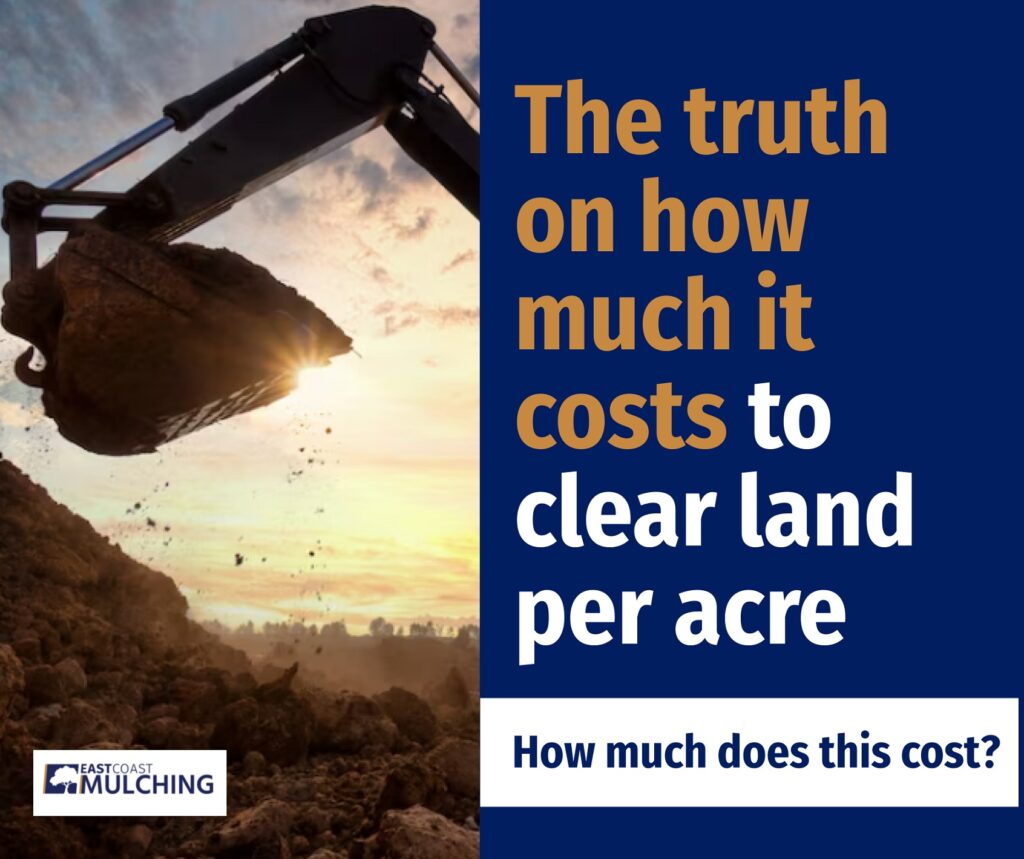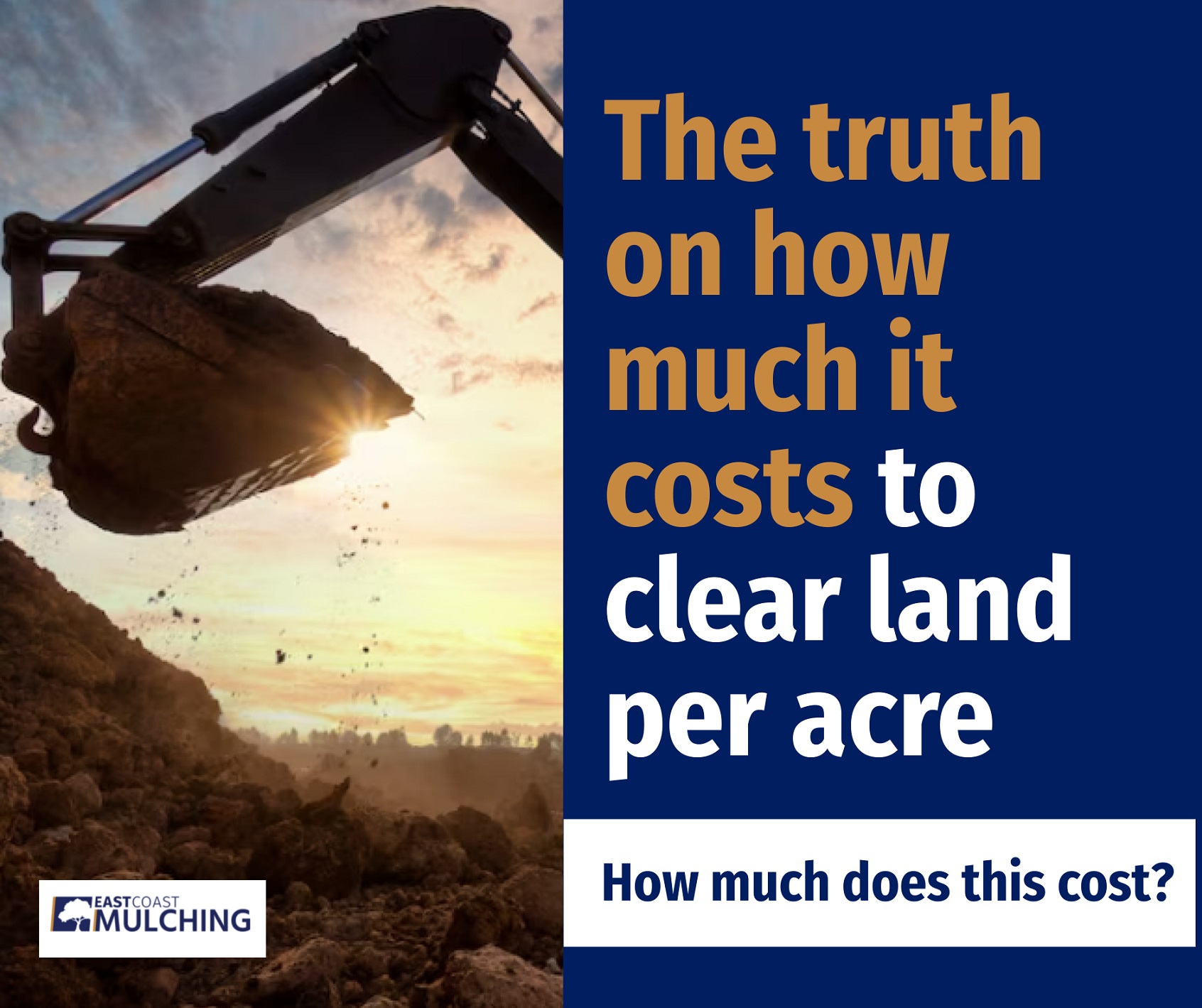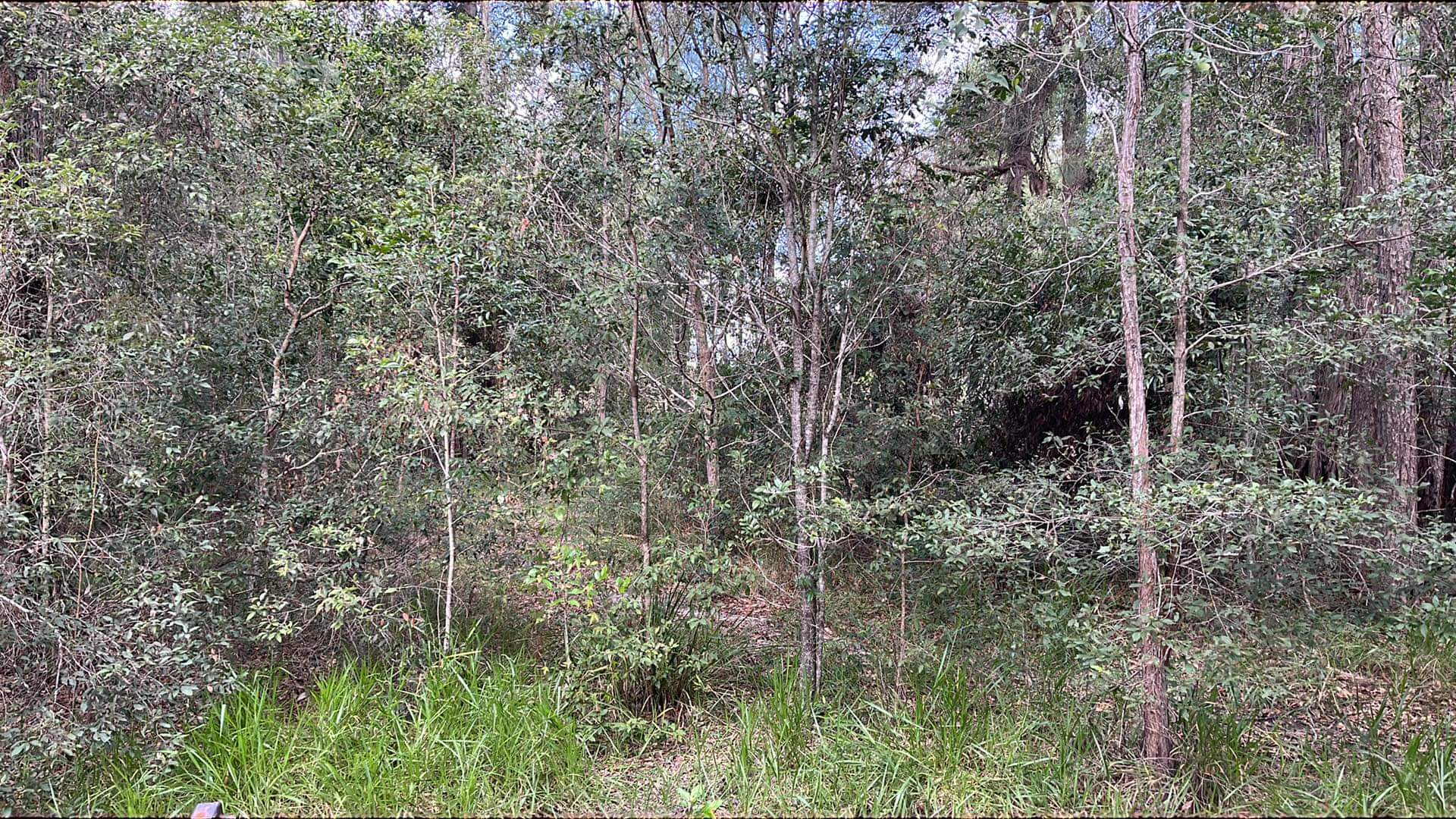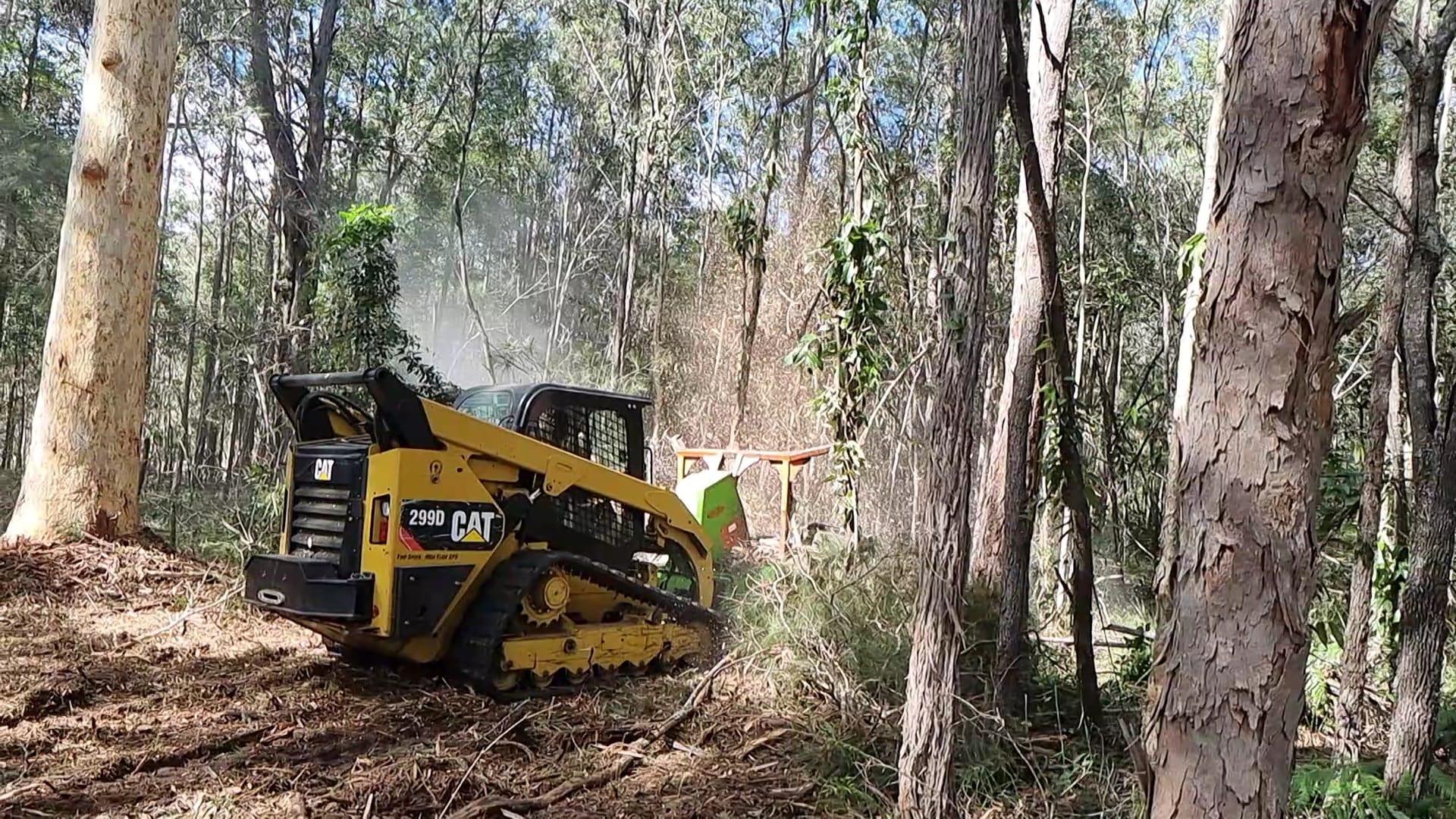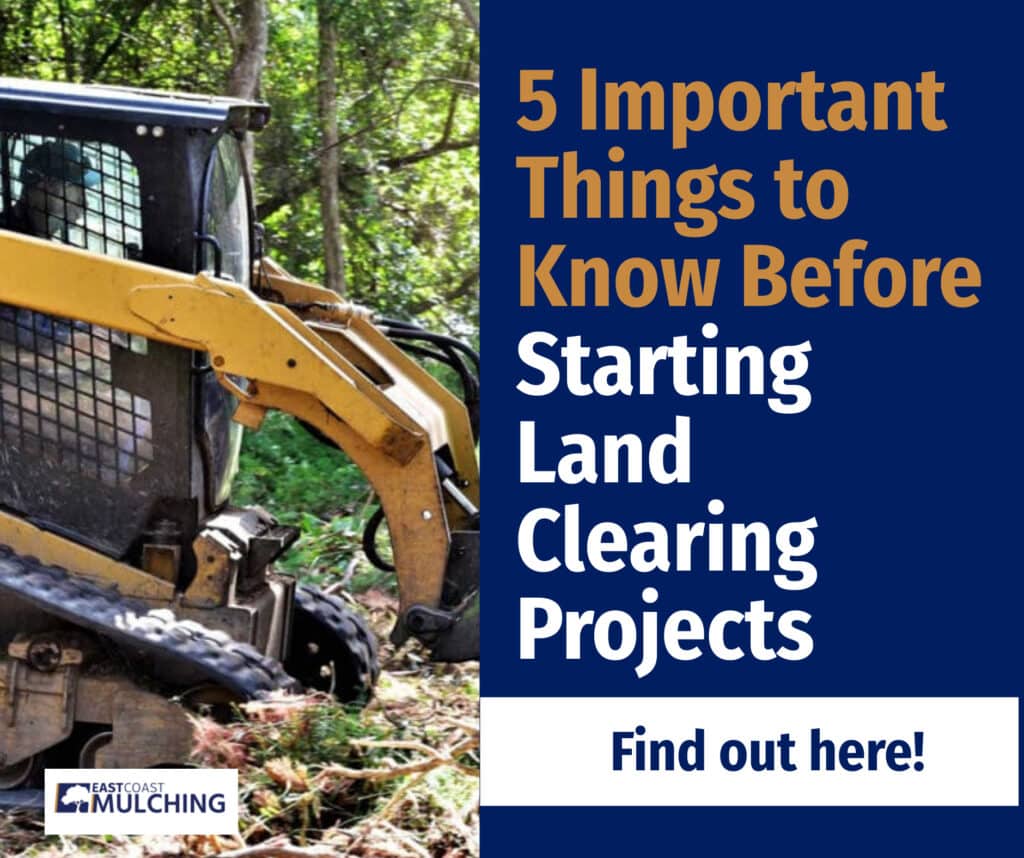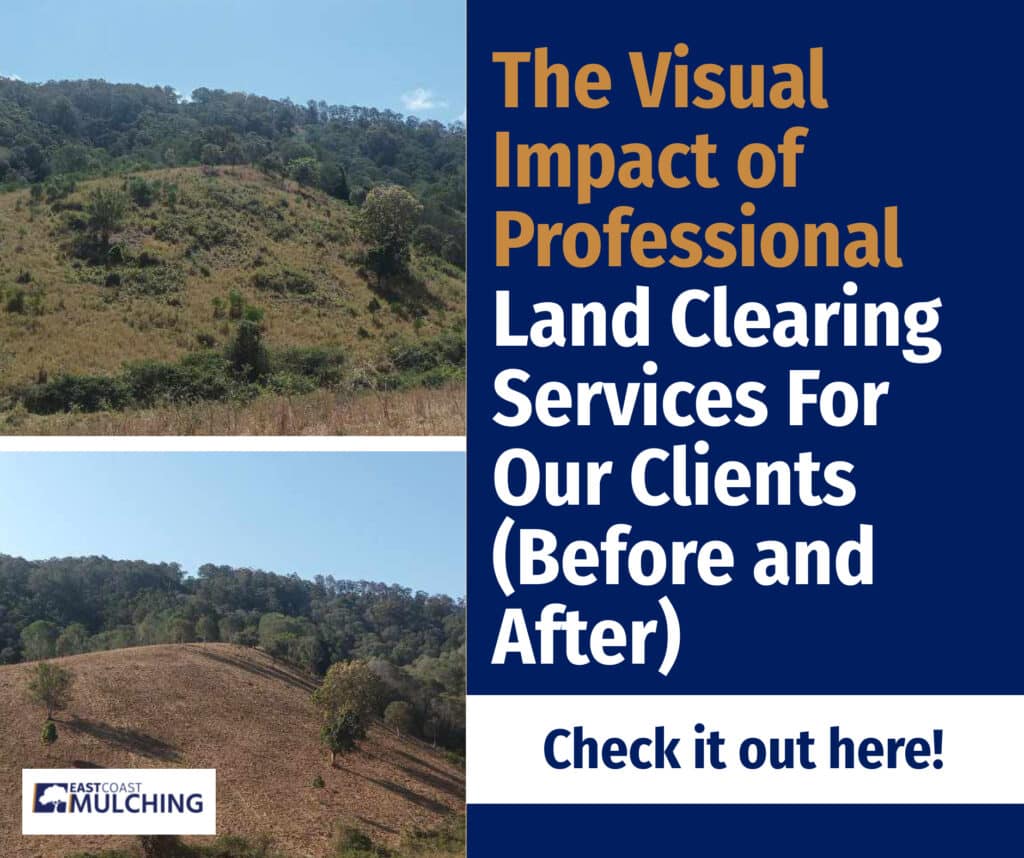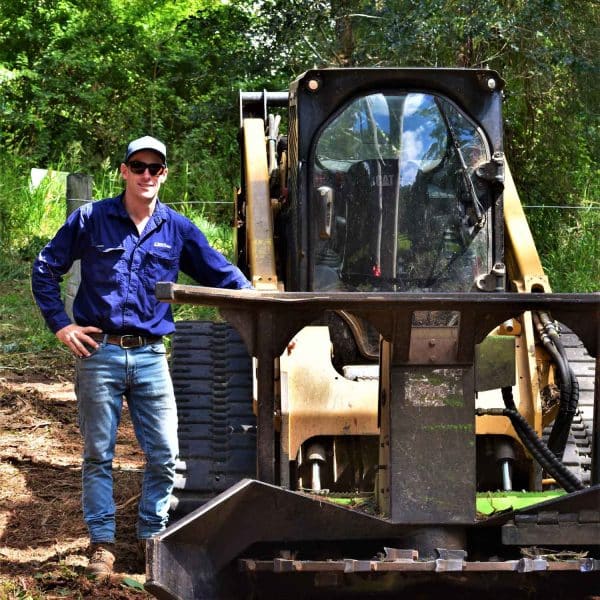The land clearing cost guide
What are your real land clearing costs?
Land is a precious commodity and essential to the Australian dream. For decades, Australians wanted nothing more than to purchase land and build a home to raise a family. However, preparing untouched bushland involves significant land clearing and site preparation before construction begins. Commercial and agricultural enterprises face the same challenge. Sometimes, the cost to clear land can uncover new, previously unknown expenses. We know you’re excited to build your dream house, but you mustn’t get ahead of yourself. A construction site requires significant land preparation, including tree clearing and grading. When new landowners set their budget for home building, they often downplay or forget to factor in clearing costs, including bush clearing rates. Overlooking this part is a massive oversight as costs can pile up quickly.
Key Takeaways 
- The cost to clear land varies based on factors such as property size, accessibility, remoteness, terrain, and type of vegetation.
- Machine hire can be expensive. Equipment costs depend on size, type of machine and whether you are paying for dry hire (without an operator) or wet hire (with an operator.
- You must consider if you need a permit due to protected vegetation on your property. You can determine if you need a permit through an ecological survey.
- There are different land clearing methods, and each has its costs. Clearing and grubbing, prescribed burning and forestry mulching are the most common.
- Paying for high-quality services ensures you complete your project effectively the first time. Proper land clearing will result in higher value and well-prepared land.
When you begin to prepare the land, there’s much you should consider regarding your expenses. Here are some questions to ask yourself:
- How large is my property?
- Can you easily access it?
- How remote is it?
- What method of land clearing should I use?
- What is the terrain like?
Let’s get into what you can expect to pay to clear land.
Cost of machinery hire
A land clearing job for a building site or other development project typically involves heavy machinery. This equipment can contribute a lot to your expenses. You’ll likely see costs divided into dry and wet hire rates when hiring a machine. Dry hire refers to renting the machine without a trained operator included. Wet hire means an operator will perform the job for you. For obvious reasons, wet hire is significantly more costly.
The size of the machine will also affect the price. The heavier the machine, the more expensive it will be to hire. The rental company may also require that you hire the machinery for a minimum number of hours.
Let’s break down the cost of hiring machines commonly used in land clearing. The prices quoted here are approximate. You can get quotes across a range of machines at iseekplant.
Excavators
Dry hiring excavators costs around $40 per hour for smaller one or two-tonne machines. As the equipment’s weight increases, you can add roughly $5 to $10 per hour for each tonne. Rates increase dramatically for the giant machines in the 40 to 50-tonne range due to upkeep costs. You could expect to pay about $165 to $190 per hour at those levels.
Wet hire adds about $70 to $100 on top of the dry hire rates.
Image: ECM dry hire machinery
Track loaders and skid steers
Track loaders and skid steers are typically categorised as small, medium and large depending on their size and horsepower. You can expect dry hire rates for these categories to be around $85, $90 and $105, respectively. Wet hire will add about $30 to the price.
Backhoe
Backhoes combine front-loading, and excavator capabilities and are helpful for major clearing and development projects. Backhoes are available with 4×2 and 4×4 drivetrains. While they can be beneficial, they are usually only available for wet hire.
4×2 backhoes hire for $200 to $250, depending on weight. You can hire a 4×4 backhoe for heavier duties for about $250 to $300.
If you would like to learn more or have any questions regarding land clearing machines, contact East Coast Mulching.
The lay of your land
Firstly, you should ascertain your property lines to know exactly where you can clear land. Identifying your exact boundaries means getting a land survey.
Topographic surveys
A topographic survey will gather data such as:
- Determining your land’s boundaries;
- Showing the land’s contours;
- Identifying any features like rivers or human-made structures.
Land surveys can cost anywhere from around $400 to several thousand dollars. The size of your property, the land’s topography, and the vegetation density can all affect the price.
Another direct cost to clear land is the state of your property. Some core factors here are:
Is your property particularly hilly?
Properties that have hills and valleys pose challenges for land clearing machinery. Complex terrain may require extra human resources and slow down land clearing progress.
Steep inclines also contribute to soil erosion issues. Heavy rain can wash away topsoil and leave the land arid and infertile without trees or root systems to hold the soil together. Rehabilitating the land is very expensive if it’s possible at all.
If the soil gets washed into rivers or other waterways, it may contaminate the water and cause flooding. Soil buildup can clog rivers and prevent the water from flowing.
Is it heavily forested land?
Heavily wooded land increases the workload, which will factor into clearing land costs. Depending on the land clearing method, vegetation will be handled differently. Tree removal through clearing and grubbing requires machinery to haul felled trees from the property. This method raises practical questions about access to cleared land and how many trees need removal. Forestry mulching, on the other hand, will deal with vegetation on the spot.
The type of vegetation will also impact the cost. Small trees and thick undergrowth will pose fewer problems than densely packed large trees.
What is the soil type?
Soil types can potentially hinder land clearing work, especially if machinery risks damage from the rocky ground. Also, if frequent rain softens the ground, you may face soil damage that you must fix afterwards. Mud can also restrict equipment movement and delay progress.
Are there existing structures?
Structures can pose significant issues depending on their footprint. Structures may include small toolsheds, barns and even a previous owner’s dwelling. If the building is small enough, you may be able to dismantle and dispose of it yourself.
If the buildings are more significant, you’ll need to hire machinery like bulldozers and excavators for removal. You’ll also likely need trucks to remove the debris from the property. Depending on the size and number of buildings you need to remove, you might pay $5000 to $15,000.
Many structures, like old sheds, are on concrete slabs that need breaking up and removing. Concrete removal involves sledgehammers and crowbars for smaller slabs and jackhammers for more giant, reinforced slabs.
Hiring concrete removal specialists may cost a few hundred to thousands of dollars, depending on the amount of concrete you’re removing.
Land clearing permits associated with the cost of clearing land
Land clearing permits are part of the government’s mandate to protect Australia’s native vegetation, animals, and other natural resources. In particular circumstances, you may need to apply for a land clearing permit from local councils before you clear land. Contract a qualified person, generally an ecologist or botanist, to conduct an ecological survey of your property’s ecology. The pricing for ecology surveys varies based on factors like:
- The size of the property;
- Distance to the property;
- How many people the survey requires;
- How long the survey takes?
While prices can cover a wide range depending on the project, you can expect to pay $1000-$2000 for a survey as a reference. If the survey identifies protected species of flora, you must apply for a protected plant clearing permit. Applying for this permit has a fee of $3216 payable on application. If your clearing activities are exempt, you won’t need to undertake an ecology survey or apply for a permit. Exemptions include:
- Reducing danger posed to humans and infrastructure;
- Creating firebreaks;
- Managing weeds (ex., noxious weeds);
- Clearing for routine infrastructure maintenance;
- Reclearing land legally cleared within the last ten years.
We also suggest contacting and inquiring for your local council’s approval. For example, the Sunshine Coast Council, Brisbane City Council or Wide Bay Burnett. This is an excellent way to understand the actual cost of clearing land.
If you would like to learn more or have any questions regarding land clearing permits, contact East Coast Mulching.
Different methods of cost to clear land
Clearing and grubbing
Clearing and grubbing use multiple machines like chainsaws, excavators, and bulldozers. Through this method, a clearing team will remove trees, uproot the stumps and remove the debris. Some elements that will affect the cost of this method are:
- The number of trees there are per acre;
- How much vegetation per acre;
- The diameter and height of the trees;
- The type of root systems;
- The terrain’s difficulty;
- The number of machines required;
- Time required for the project;
- Whether debris removal is through burning or hauling away;
- Backfilling holes after stump removal;
- The amount of fuel needed to reach the location and complete the job.
These factors vary depending on the site, and cost estimates may range from $2000 to $7000 per acre.
Forestry mulching
Many influences governing clearing and grubbing’s cost also affect forestry mulching. The vegetation and tree density per acre plays a part. A heavily wooded area will always attract higher prices than lightly wooded lots, and flat ground is easier to manage than steep inclines. However, with the use of a forestry mulcher equipped with a mulching head, there are certain benefits that help keep clearing costs down naturally. For example, since operators such as East Coast Mulching conduct tree mulching and stump grinding onsite, there’s no need for tree removal. Fallen trees, tree stumps, and other debris are shredded and spread back over the ground. Another added benefit is this mulch layer acts as erosion control, protecting soil from wind and rain. We also work with one machine, which reduces staffing and fuel costs. Once again, land clearing prices will fluctuate between properties, but you can reasonably expect to pay around $2500 per acre.
Prescribed burning
Prescribed burning costs are determined mainly by the size of the burn area. It would be best to consider the distance to the nearest building and whether you have easy access to fresh water. While costs vary, prescribed burning generally costs $1000-$1500 per hectare.
Prescribed burning is an intensive process with lots of risks. A significant amount of planning is necessary. Permits and liaising with the relevant authorities are often required. There’s also no guarantee you can complete the job, as the weather can cause problems.
Forestry mulching offers the simplest and quickest solution to tree clearing, whether for site development or fire mitigation.
Quality land clearing services are key
Land clearing is like any service: you get what you pay for, and the cost to clear land can skyrocket if you are not careful. We appreciate why you might go for the cheapest land clearing company you can find. But think about the long term. How does a budget-friendly land clearing business keep its costs down? Usually, they cut corners and work quickly, leading to a half-baked job. You don’t want to deal with churned-up soil and gouges in the land from unfilled stump removal. You could face fines totalling tens of thousands of dollars without due diligence on relevant laws regarding your clearing project. That’s one expense everyone wants to avoid. You can minimise your cost to clear land by contracting reputable land clearing professionals to remove your property correctly the first time.
Increased land value
When you sell your property, taking the initiative to clear the land first greatly benefits prospective buyers. You will save them money and time as they can quickly develop the property. While land clearing will likely cost you thousands of dollars, you can potentially reclaim all of that and more through the resultant increase in your land’s value. The added value alone makes land clearing an excellent return on investment as long as you approach it sensibly.
Land preparation
When clearing land for a construction project, clearing goes hand-in-hand with site preparation. Several factors determine site preparation costs. Each project is unique and requires specific information to understand the cost of clearing land. However, some broad estimates can give you a sense of the expected expenses.
Land grading
Land grading creates level ground for a construction site. This process ensures water runoff doesn’t flow towards your house’s foundation. Land grading involves moving topsoil to the grading site and smoothing it across the area. Depending on the project size, this job typically includes heavy machinery like earth movers and bulldozers.
Soil type
Conducting soil tests will determine if the site is stable enough to support a structure. Factors like moisture from a high water table and sandy soil can mean the site isn’t suitable for a house. Soil testing typically costs around $400.
Sloped land
Creating a level site on sloped land incurs additional costs. A cut-and-level approach takes soil from the high side to raise the lower side. Drainage and soil stability are particular concerns in this situation. Retaining walls are usually required to prevent erosion and create a safe working site.
Levelling sloped land is intensive, which will be reflected in the cost. This part of land preparation can easily be the most significant expense. In some projects, costs can potentially be north of $20,000.
If you would like to learn more or have any questions regarding land clearing, contact East Coast Mulching.
Prepare land with forestry mulching
Forestry mulching is an excellent way to prepare for grading. Maintaining root systems through stump grinding helps keep the soil together and provides a more stable site, even on sloped ground.
Forestry mulching foregoes much of the right equipment necessary for other methods. This saves on staffing and decreases fuel consumption. Grading is already expensive, so using a more efficient cost-to-clear land method is ideal.
Are you looking for land clearing companies near me? We are land clearing contractors with a very efficient team that takes your budget and needs seriously. Call or email us for a quote for your next land clearing project.
Related Articles
- Forestry Mulching vs Traditional Land Clearing: Which is More Efficient?
- What is Land Clearing? (Step by Step Guide for Land Clearing in Queensland)
- 7 Best Land Clearing Services In Queensland
- Forestry Mulching Services: Easy Way To Clear Land Near Me
- How Does Our Land Clearing Service Save You Money Without Compromising Quality?

